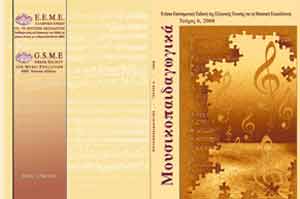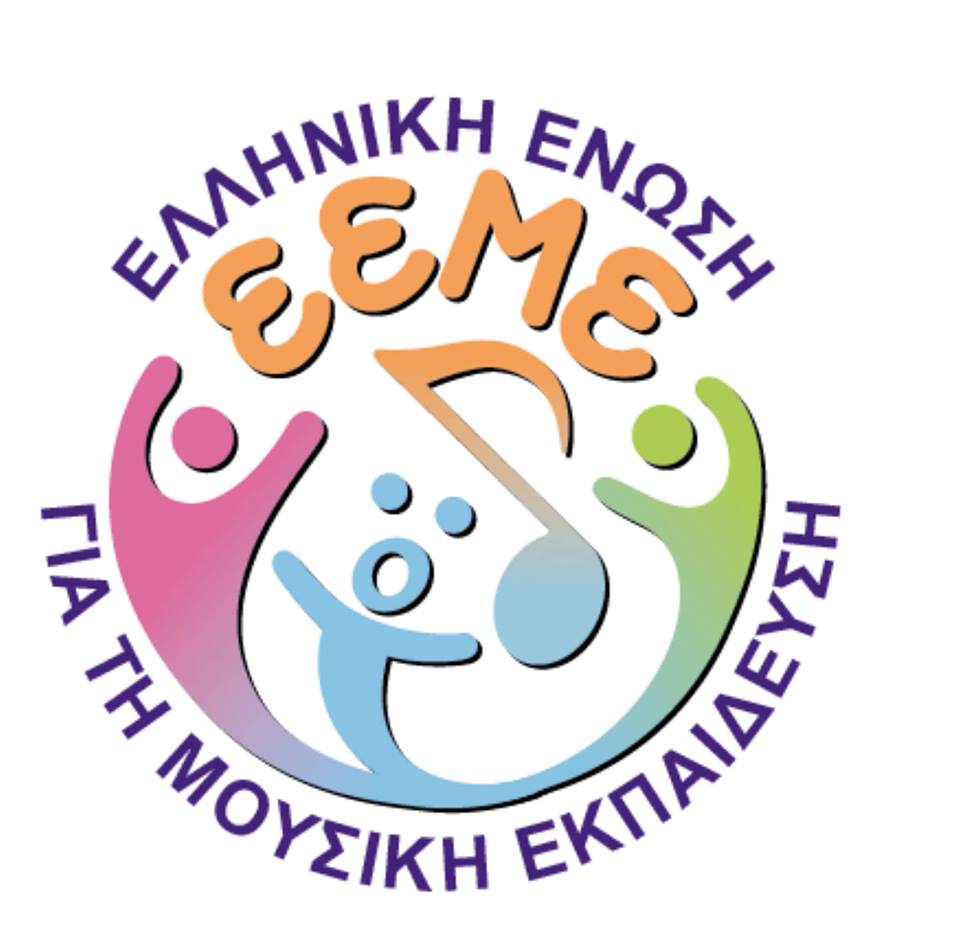
1) Lelouda Stamou: Greek music teachers' self-assessed research interest and knowledge in action research: Comparing the effects of two professional development courses in quantitative and qualitative research
2) Zoe Dionyssiou: Music educational programs and museums: an example from the Museum of Dionysios Solomos in Corfu
3) Theano Koutsoupidou: Musical collaboration and creativity in primary music education: Research and teaching practice
4) Maria Magaliou: Kinetic and iconic representations of music and their role in children's musical development and socio-emotional development: an experimental research in pre-school education
5) Despina Bouldi: Musical experience and emotional responses: A review of the research bibliography
Abstracts:
1) Lelouda Stamou
Greek music teachers' self-assessed research interest and knowledge in action research: Comparing the effects of two professional development courses in quantitative and qualitative research
The study aimed at (a) investigating the effect of a professional development program in action research for music teachers on their self-assessed research knowledge, ability, and interest towards qualitative, and more specifically, action research, and (b) comparing the effects of this program with the effects of a previous professional development program in quantitative research for music teachers. (Stamou, Humphreys, & Schmidt, 2006). Participants were 28 music teachers teaching in public schools and conservatories in different areas of Greece, who chose to participate in a 25-hour professional development course in action research. The Research Interest and Ability Scale (RIAS) (Stamou, Humphreys, & Schmidt, 2006), adopted for qualitative research, was administered at the beginning and at the end of the course to all participants. Reliability for the improved (10-item) RIAS was .35 for the pre-testing and .71 for the post-testing. Low reliability for the pre-testing indicated that the RIAS was not able to function before the seminars, due to the music teachers' lack of familiarity with the concepts of qualitative and action research. The satisfactory reliability co-efficient for the post-testing and the fact that previous research course attendance, holding a university degree, and years of teaching experience did not have an effect on the post-test scores, support the fact that the professional development course was the main influence on them. Findings of this study when compared with findings of a previous study on the effect of a professional development program in quantitative research for music teachers, are indicative of the Greek music teachers' general familiarity with quantitative, but not with qualitative, research.
2) Zoe Dionyssiou
Music educational programs and museums: an example from the Museum of Dionysios Solomos in Corfu
The present article explores the possibilities of designing music educational programs in museums. It examines a possible dialogue among arts that could take place in various museums and at the same time is gives emphasis on aesthetic experience. Aesthetic experience remains one of the basic aims of music education, as well as arts education in general. A music-museum educational program is given as an example of the theoretical thought that is unfolded here. The program under the title: " 'I recognize you from the side': a musical journey through the life and work of Dionysios Solomos", addressed to students of primary schools, was carried out at the Dionysios Solomos Museum in Corfu between spring 2007 and spring 2008. The educational program was designed on the occasion of the 150 years from the death of our national poet. It was based on the triptych music - logos - image, aiming at the development of aesthetic experience in the museum. Here we present the philosophy behind the designing of the program, and how it responds to the theoretical considerations.
3) Theano Koutsoupidou
Musical collaboration and creativity in primary music education: Research and teaching practice
Creativity in music can be practised both individually and collaboratively. Working in groups towards a common goal through discussions about possible solutions and combination of different individual music skills and ideas offers the potential of creating music of a more advanced level, which may demonstrate a wider variety of music qualities. The present article investigates the musical collaborations of children focusing on the four main factors that are involved in musical creativity: the creative person, the creative environment, the creative process, and the creative product. Issues that will be discussed concern children's motivation (creative person), the interactions within a group (creative process), the musical or pedagogical context in which creativity is developed (creative environment), and the final product of children's collaboration (creative product). The discussion is developed based on the observation of vignettes of six to seven-year-old children making music in groups, whilst the benefits of musical collaboration both for children's development and for their creative products in music are discussed based on views and experiences expressed by primary teachers and music specialists. In this way, an effort is made to bring together research (through the observation and analysis of children's creative collaborations in music) and teaching practice (through the analysis of music educators' views and experiences).
4) Maria Magaliou
Kinetic and iconic representations of music and their role in children's musical development and socio-emotional development: an experimental research in pre-school education.
The aim of the study presented in this article was to research the contribution of music activities both to the musical development and the socio-emotional development of pre-school age children, through kinetic and iconic representations. More specifically, through this research we wanted to study the contribution of music activities related to kinesthetic and iconic representations of music to the musical development and the socio-emotional development of 4-6 years old children, who attended kindergarten. The experimental program has been implemented for four months and the examination of its influence on children's musical development and socio-emotional development has been based both on quantitative and qualitative methods of research. The findings of the research showed the positive influence of such a program on the development of children's musical perception and musical skills as well as on their socio-emotional development.
5) Despina Bouldi
Musical experience and emotional responses: A review of the research bibliography
One of the reasons that connect human beings with music is their emotional responses to it. From time to time many theories tried to explore these responses (Expression Theory, Arousal Theory, Theory of imagined persona, Cognitive Theory, Theory of information, etc.). Also, the result of a multidisciplinary approach of the problem was a wide variety of researches, with various theoretic backgrounds and different methodolodies, techniques, questions and means. This inhomogeneousness created a confusion, which is obvious when someone studies the relative bibliography. The present article's intention is a review of the researches that explore emotional responses to music and their categorization based on the variables that examine and their methodology. Finally, a brief critical review with particular proposals for future research is also reported.





 Please wait...
Please wait...